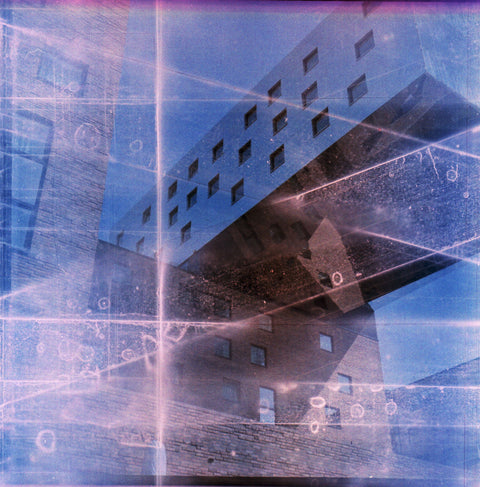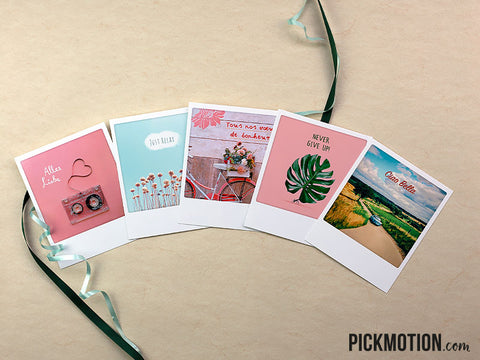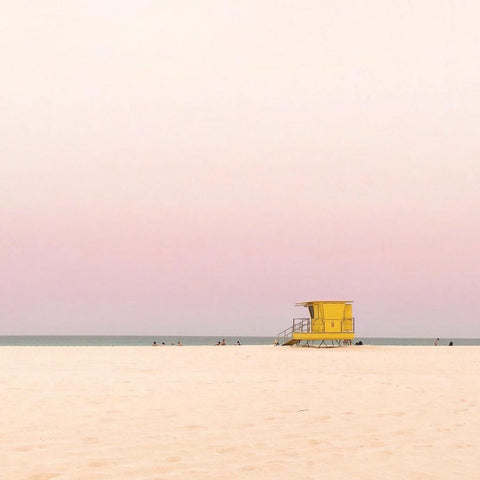Today, in connection with our current monthly challenge #urbansplendors , I'm taking you on a little tour through the archive of my very personal interpretation of urban splendor.
In addition, I will tell you something about the techniques used to create the pictures.
Look forward to 100% analogue photography
Frankfurt, sometimes called the Manhattan of Germany – Mainhatten – has a distinctive skyline of high-rise buildings, but also beautiful old buildings, as can be seen here on Kaiserstrasse in front of Frankfurt Central Station.

A look in the other direction reveals a seemingly endless rail network.

I took the pictures with an old Soviet 35mm camera, a Zenit E from 1966. The interesting monochrome tones are due to the film - the Lomochrome Turquoise XR 100-400 from Lomography, a color negative film with a special emulsion that is based on the famous Kodak Aerochrome.
Panorama on film - and on expired film at that?! Yes, it is possible and looks wonderful, as this panorama of the Jerusalem Synagogue in Prague shows.

I took this picture with the Russian Zenit Horizon 202. The film is a slide film that expired in 2004, the Agfa CT precisa 100, which I developed as a negative instead of using the positive development process intended for it - a so-called cross-development. This often results in color shifts and bright tones.
Prague is a more than magnificent city – there is so much here: historical architecture, a river, the Charles Bridge, an interesting nightlife and penguins.

I created this experimental image using a so-called film soup. Film soup? Yes, it sounds strange, but it does exist and it's relatively simple. Simply boil a few completely unusual ingredients, such as mouthwash, juice, spices, fabric softener or many other things with water, put the film cartridge in, simmer gently for 2-3 minutes and leave to steep a little longer if necessary. Then rinse the film cartridge in a container of water, dry it, put it in a bowl of rice and after a few days the whole thing is ready. I then took the photos with a Soviet Lomo LC-A from 1987.
The entire splendor of a city, or at least a part of it, because the city is simply too big for one picture - Moscow. Here with a view of the famous Luzhniki Olympic Stadium - a symbol of urban (Soviet) splendor in itself.

The effect with the flower lights was created by double exposure, ie the same section of film was exposed twice. With some cameras this is possible directly - in my case with my Zenit 11 I had to do a little trick and rewind the film.
The many Orthodox churches are also part of Moscow's urban splendor - they shape the entire cityscape, just like the many overhead lines of the trolley buses and trams.

This picture is again a film soup, but this time I soaked the film cartridge in a mix of different ingredients for several hours instead of boiling it for a few minutes.
Shop windows can also reflect urban splendor.

Double exposures have always fascinated me and are one of my favorite methods of photography on film because you can create completely new images and there are no limits to your imagination as to what you can mix together - anything is possible. I double-exposed this image with my Lomo Lubitel from 1953 on Kodak Portra 160.
Victoria, or affectionately called “Golden Angel”, the crowning statue on top of the Berlin Victory Column.

Where do the holes come from - the so-called sprocketholes? I got them in the picture by inserting a 35mm film into a medium format camera - in this case an expired Italian Ferrania Solaris 200 film into my Pentacon Six TL. The smaller film, together with the actual image size of the camera, allows you to photograph beyond the sprocketholes (which are used to transport the film in the 35mm camera).
Thanks to 3D printers, there are now many inexpensive adapters that make it easy to use 35mm film in a medium format camera.
Oberbaum Bridge, subway and S-Bahn tracks – three symbols of Berlin’s urban splendor united in one image.

I made this double exposure with my Lomo Lubitel from 1953. The unusual colors came about because I did not develop the Lomochrome Purple XR 100-400 (which produces interesting purple colors on its own) in the usual color negative process, but as a positive film, a slide film. Also known as cross-development.
Of course, Berlin also has a lot of modern architecture to offer, such as the nhow Hotel, located directly on the Spree.

This interesting image was created because I wanted to overlay the lines and structures of modern buildings with my own new lines. To create the effect you see here, I stuck thin tape in the space between the lens and the film of my camera. The result is more than interesting and quite experimental.
Finally, I will send you off into the now arrived autumn with a final cross-development of a slide film.

This was my little alternative and experimental tour on the topic of #urbansplendors and an insight into the creation of some of the effects and techniques of my photos.
If you are interested in seeing more of my pictures, just take a look at Instagram @_baunovart_ .





